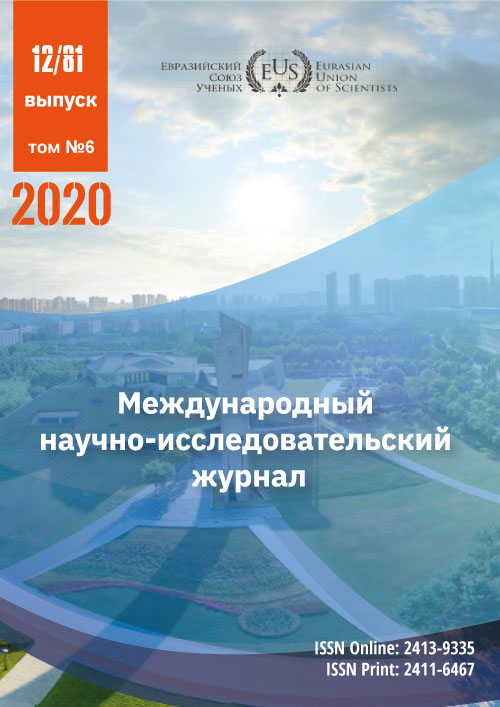MODELING AND CALCULATION OF THE PHOTOLUMINESCENCE SPECTRUM OF A HETEROSTRUCTURE WITH A QUANTUM WELL BY THE EXAMPLE OF ALGaAS / GaAS
Abstract
This research aims to improve the available means for characterizing the emission properties of quantum well heterostructures by modeling and calculating the absorption and photoluminescence spectra using the GaAs/AlGaAs heterostructure as an example. Research is conducted based on multilayer heterostructures and heterostructures with quantum wells to develop detectors and emitting elements in the infrared frequency range, pulsed solid-state generators in the millimeter and submillimeter-wave ranges. The study of radiating properties of heterostructures with a quantum well on A3B5 compounds has become widespread [1-3]. It is possible to control the heterostructure's emission frequency by selecting the optimal composition of the wideband semiconductor layer, the level and type of its doping, the doping region, and the quantum well layer width, which is of applied importance for the development of optoelectronic devices. Technologies for manufacturing such heterostructures are labor-intensive, time-consuming, and expensive processes, which contribute to developing methods for modeling and calculating the characteristic frequencies of radiation and absorption of radiation. Based on such calculations, radiating elements of the submicronic wavelength range can be developed based on heterostructures with a quantum well on the A3B5 type compounds. [4]
References
2.Гермогенов В.П. Материалы, структуры и приборы полупроводниковой оптоэлектроники// Учеб. пособие. – Томск, -Издательский Дом ТГУ. – 2015. - С.272.
3.Алферов Ж.И. История и будущее полупроводниковых гетероструктур// Физика и техника полупроводников,- 1998. - Т.32. - С.3-18
4.Алферов Ж.И. Двойные гетероструктуры: концепция и применение в физике, электронике и технологии. // Успехи физических наук, 2002, 172(9), 1066-1086.
5. Федоров А.В. Физика и технология гетероструктур, оптика квантовых наноструктур// Учебное пособие. – СПб: СПбГУ ИТМО, -2009. С. 195.
6.Гасумянц В. Э. Размерное квантование. Часть 1. Энергетический спектр наноструктур : учеб. пособие / В. Э. Гасумянц [и др.] // под ред. С. Н. Лыкова. – СПб.: Изд-во Политехн. ун-та, 2009. − 258 с.
7.Brierley S.K. Quantitative characterization of modulation-doped strained quantum wells through line-shape analysis of room- temperature photoluminescence spectra// J. Appl. Phys. – 1993 – V/ 74. N.4 – P. 2760-2767.
CC BY-ND
A work licensed in this way allows the following:
1. The freedom to use and perform the work: The licensee must be allowed to make any use, private or public, of the work.
2. The freedom to study the work and apply the information: The licensee must be allowed to examine the work and to use the knowledge gained from the work in any way. The license may not, for example, restrict "reverse engineering."
2. The freedom to redistribute copies: Copies may be sold, swapped or given away for free, in the same form as the original.







